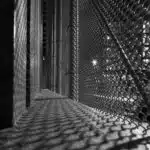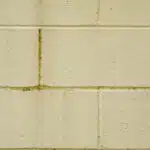Painting a fence is an essential aspect of maintaining the overall aesthetic of your property. Not only does it add a touch of charm to your home, but it also helps protect against weather damage and prolongs the life of your fence. As a professional painter with years of experience in fence painting, I am well-versed in the techniques and tools required to achieve a beautiful and long-lasting finish.
In this article, I will provide you with valuable insights on how to paint a fence like a pro. Whether you are new to painting or an experienced DIY enthusiast, this guide will equip you with all the necessary knowledge to complete your project successfully. From choosing the right type of paint and tools to preparing the surface and applying the paint, I will cover everything you need to know about painting a fence. So let’s get started!
Assessing The Condition Of Your Fence
According to a study conducted by the American Fence Association, the average lifespan of a wooden fence is approximately 12-15 years. While some fences may last longer or shorter depending on various factors, it’s important to regularly assess your fence’s condition to ensure it remains in good shape.
Assessing Fence Damage is the first step in determining whether your fence requires painting. Look for signs of rotting or decay, as well as any cracks or splinters that could lead to further damage. If you notice any loose boards or posts, this should be addressed before painting to avoid future problems. Repairing Fence Damage before painting is crucial to ensure that the paint adheres properly and lasts longer.
Once you’ve assessed and repaired any damage, it’s time to choose the right type of paint for your fence. A high-quality outdoor paint with UV protection is recommended for wooden fences. Take into consideration factors such as weather resistance and durability when selecting a product. It may also be helpful to consult with a professional painter or local hardware store for advice on choosing the best paint for your specific fence needs.
Choosing The Right Type Of Paint
When it comes to painting your fence, selecting the right type of paint is essential. Not all paints are created equal, and choosing the wrong one could result in a subpar finish that doesn’t last as long as it should. Two popular options for fence paint are stain and traditional outdoor paint.
One major benefit of using a stain is that it penetrates the wood instead of just sitting on top of it like traditional paint does. This means that stains won’t peel or crack like paint sometimes can, which translates into less maintenance in the long run. Additionally, stains come in a variety of colors and finishes, so you can choose a look that complements your home’s exterior.
When deciding between matte or glossy finishes for your fence, there are several factors to consider. Matte finishes tend to be more forgiving when it comes to surface imperfections, while glossy finishes reflect more light and can make colors appear more vibrant. Ultimately, the decision will depend on personal preference and the look you want to achieve for your outdoor space. Keep in mind that glossy finishes may require more maintenance over time as they are more prone to showing scratches and wear.
Moving forward, selecting the best tools for the job is crucial for achieving a professional-looking finish on your fence. From brushes to rollers to spray guns, there are many different options available depending on your skill level and budget. In the next section, we’ll explore some key factors to consider when choosing tools for painting your fence.
Selecting The Best Tools For The Job
To achieve a beautifully painted fence, selecting the best tools for the job is crucial. The first step in choosing the right tools is to compare prices and identify the ones that fit within your budget. However, it’s important to keep in mind that quality should never be compromised for price. Investing in high-quality tools may cost more upfront but will save you time and money in the long run.
Another aspect to consider when selecting tools for fence painting is understanding paint finishes. There are different types of finishes, including gloss, semi-gloss, satin, and matte. Each finish has its own unique qualities and can affect the final look of your fence. For example, a high-gloss finish will provide a shiny appearance while a satin finish will offer a subtle sheen. It’s important to select a paint finish that suits your specific needs and preferences.
By selecting the best tools for the job and understanding paint finishes, you can achieve professional-looking results when painting your fence. In the next section, we will discuss how to prepare the surface for painting by cleaning and repairing any damages before applying paint.
Preparing The Surface For Painting
Before painting a fence, it is essential to prepare the surface adequately. Preparing the surface helps to ensure that the paint adheres properly and lasts longer. To begin with, inspect the fence for any damages or signs of rotting. Any damaged sections should be repaired or replaced before proceeding with painting.
Next, clean off any dirt or debris from the fence’s surface using a power washer or a stiff-bristled brush. It is crucial to ensure that all surfaces are free from dirt, dust, and any other contaminants. Once cleaned, allow ample time for the fence to dry thoroughly before applying any paint.
Color choices are also an essential aspect when preparing to paint your fence. Choose colors that complement your home’s exterior color scheme and style while ensuring that they adhere to any local regulations about fence colors and finishes. Additionally, consider using protective coatings such as sealants or varnishes that help preserve your newly painted fence’s appearance and increase its lifespan.
Transition into subsequent section: Once you have prepared your fence adequately for painting and chosen suitable color schemes and protective coatings, the next step is cleaning the fence before beginning to apply paint.
Cleaning The Fence
- Prior to painting a fence, it is important to remove any debris and clear any mildew that may be present.
- Debris can be removed using a pressure washer, while mildew can be cleared with a brush, steel wool, and a mildew-killing solution.
- Washing the fence is the next step and can be done with a pressure washer, a garden hose, and a brush.
- For best results, the pressure washer should be set to low-pressure and used from top to bottom in order to rinse away dirt and debris.
- After washing, the fence should be allowed to dry completely before painting.
- To ensure an even finish, it is recommended to use two coats of paint, allowing each coat to dry completely before adding the next.
Removing Debris
To ensure a smooth and flawless finish, removing debris from your fence before painting is crucial. There are several clearing methods to choose from, depending on the type of debris that needs to be removed. For loose dirt and dust, a simple wipe down with a damp cloth or sponge may suffice. However, for tougher stains like bird droppings or mold, you may need to use a pressure washer or specialized cleaning solution.
When removing debris from your fence, it’s important to avoid causing any damage. Be careful when using pressure washers as they can strip away paint and damage the wood if used incorrectly. Additionally, if you’re using a cleaning solution, make sure to read the instructions carefully and dilute it properly before applying it to your fence. Using too much of the cleaning solution can cause discoloration or even harm nearby plants.
Taking the time to properly remove debris from your fence will not only help your paint adhere better but also prolong the life of your fence. By following these tips and being mindful of potential damage, you’ll be able to achieve a clean surface that’s ready for painting in no time!
Clearing Mildew
Cleaning your fence is an essential step before painting it. A clean surface ensures that the paint will adhere better and last longer. In removing debris, one of the toughest challenges is mildew growth. Mildew can cause discoloration and damage to your fence if left untreated. In this subtopic, we’ll discuss how to remove mildew from your fence and prevent it from growing back.
Removing mildew requires a bit more effort than simply wiping down the surface with a damp cloth or sponge. You’ll need a specialized cleaning solution designed specifically for mold and mildew removal. Before applying the solution, make sure to protect yourself by wearing gloves and goggles as these chemicals can be harmful to your skin and eyes. Dilute the solution according to the manufacturer’s instructions, then apply it generously on the affected areas.
Preventing mildew growth is just as important as removing it. One way to do this is by ensuring proper ventilation around your fence. Make sure there’s enough space between neighboring plants and structures that may block airflow. Regularly trimming nearby foliage can also help reduce humidity levels around your fence, which is one of the primary factors that contribute to mildew growth. Lastly, consider using paint or stain with anti-mildew properties to further prevent its growth.
In summary, clearing mildew growth from your fence should be done with caution using specialized cleaning solutions while protecting yourself from potential harm. Preventing mildew growth in the future involves proper ventilation around your fence, trimming surrounding foliage regularly, and considering anti-mildew paint or stain options when repainting your fence. By following these tips, you can keep your fence looking brand new for years to come!
Washing Fence
Maintaining clean fences is crucial in preserving their aesthetic appeal and durability. One of the most efficient methods to clean fences is by pressure washing. The benefits of pressure washing include removing stubborn stains, dirt, and debris that cannot be removed by hand. This method saves time while being eco-friendly as it utilizes less water than traditional cleaning methods.
However, there are alternatives to pressure washing for those who prefer gentler cleaning methods or have delicate fence materials such as wood or vinyl. For instance, using a soft-bristled brush along with a mild detergent can effectively remove surface-level dirt and grime without damaging the fence’s finish. Additionally, using a garden hose and regular rinsing can help prevent dust buildup on fences.
Overall, maintaining a clean fence enhances its lifespan and preserves its appearance. Whether using pressure washing or alternative methods, it is essential to regularly clean fences to prevent long-term damage caused by accumulated debris and grime. By choosing the right cleaning method that suits your fence type’s needs, you can ensure your fence remains in excellent condition for years to come.
Sanding And Scraping
After cleaning the fence, the next step is to sand and scrape it. This will ensure that the surface is smooth and free from any loose particles or old paint. Remember, a good paint job starts with proper preparation.
To begin, you will need different sandpaper grits depending on the condition of your fence. For example, if your fence has some rough spots or peeling paint, start with a coarse grit (such as 60) to remove these imperfections. Then move on to a finer grit (such as 120) to smooth out any remaining roughness. Use a sanding block or an electric sander for best results.
Scraping off old paint can be a tedious task but is necessary for achieving a long-lasting paint job. Use a handheld scraper or putty knife to remove any flaking or chipping paint. Be sure to scrape in the direction of the wood grain to avoid damaging the surface of the fence. It’s also important to wear gloves and protective eyewear during this process for safety reasons.
Now that you have sanded and scraped your fence, it’s time for the next step: filling in cracks and holes. But before we move on, remember that proper sanding and scraping techniques are essential for ensuring that your fence looks great once it’s painted. So take your time and do it right!
Filling In Cracks And Holes
The next step in painting a fence is to fill in any cracks or holes that may exist. These imperfections can cause problems with the paint adhering properly, so it is important to take care of them before moving on. The best way to do this is by using filler putty.
Using filler putty involves applying the putty to any areas that need filling, smoothing it out, and allowing it to dry completely. Once the putty has dried, you will need to sand it down until it is smooth and even with the rest of the fence. Sanding techniques vary depending on the type of wood used and the size of the area being sanded.
To help you understand how to properly fill in cracks and holes, refer to the following table for guidance on what types of filler putties are best for certain types of wood:
| Type of Wood | Recommended Filler Putties |
|---|---|
| Cedar | Water-based latex |
| Pressure-treated Pine | Solvent-based epoxy |
| Redwood | Two-part polyester resin |
| Oak | Sawdust mixed with glue |
| Cypress | Silica-fortified epoxy |
Now that you have learned about using filler putty and sanding techniques, you can move on to applying primer. This next step is crucial because it helps prepare your fence for the final coat(s) of paint, ensuring a smooth and even finish. Remember to always follow these steps carefully for a high-quality paint job that will last for years to come.
Applying Primer
While some may argue that applying primer on a fence is unnecessary, it is actually a crucial step in achieving a smooth and long-lasting finish. Primer acts as a base coat that helps the paint adhere better to the surface of the fence. It also aids in preventing moisture from seeping into the wood, which can cause rotting and damage over time.
To ensure that your primer application goes smoothly and effectively, here are some tips:
- Use a good quality brush or roller – investing in high-quality tools will make a significant difference in achieving an even coverage of your primer.
- Apply thin coats – avoid applying thick layers of primer as this can result in drips and uneven surfaces.
- Sand between coats – lightly sanding the surface between each layer of primer will help create a smoother finish.
It’s important to note that not all fences require a primer sealer. In general, if you’re painting over an existing painted or stained fence, using a primer sealer isn’t necessary. However, if you’re working with raw wood or have areas that have been stripped down to bare wood, it’s recommended to use a primer sealer before applying your regular primer coat.
Now that you’ve applied your primer (and possibly your primer sealer), it’s time to move onto painting the fence itself.
Painting The Fence
- Prior to painting a fence, it is important to ensure the surface is properly prepared by removing any loose paint, dirt, mildew, and other debris using an appropriate cleaner or power washer.
- Once the surface is clean and dry, a quality primer should be applied to protect the wood from moisture and to provide a good base for the paint.
- After the primer is fully dry, the fence should be painted with several thin coats of a quality exterior-grade paint in a color of the user’s choice.
- Once the paint is dry to the touch, a high-quality sealant can be applied to protect the paint job from the elements.
- To add a finished look to the fence, a sealer can be applied to the surface to provide a glossy or satin finish.
- Finally, to ensure the fence is in peak condition, it should be inspected regularly for any signs of wear and tear and treated appropriately.
Preparing The Fence
Preparing the fence for painting is a crucial aspect that should not be overlooked. Whether you are doing it yourself or hiring professionals, proper preparation will ensure a flawless finish and longevity of the paint job. The first step is to inspect the fence for any damages like cracks, holes, or rot that need fixing before painting. DIY enthusiasts can fix minor damages using wood fillers or putty while major ones may require professional help.
Once the fence is repaired, it’s time to clean it thoroughly. Cleaning gets rid of dirt, dust, grime, and any other debris stuck on the surface that could interfere with the paint adhesion. There are different ways to clean your fence depending on its material. For instance, wooden fences can be cleaned using a pressure washer with mild detergent while metal fences can be wire brushed to remove rust before applying primer. Eco-friendly fence painting options like vinegar and baking soda solutions can also be used to clean without causing harm to the environment.
After cleaning the fence, allow it to dry completely before painting. Damp surfaces prevent paint from sticking properly and may lead to peeling or flaking in the future. If you opt for a DIY approach, make sure you have all the necessary tools like brushes, rollers, and drop cloths ready before starting. Hiring professionals will save you time and energy as they come equipped with modern equipment and expertise to handle any type of fencing project. In conclusion, proper preparation sets up your fencing project for success by ensuring an even coating that lasts long while keeping it eco-friendly with safe cleaning methods.
Painting The Fence
Once the fence is prepared and cleaned, it’s time to move on to the painting stage. Choosing colors for your fence can be a fun experience as it allows you to express your personality and style. However, it’s important to consider the color scheme of your home and surroundings before settling on a color. A professional painter or fencing expert can help you choose a color that complements your home’s exterior while still reflecting your personal taste.
Adding designs to your fence can further enhance its visual appeal. From stenciled patterns to murals, there are many ways to add unique designs to your fence. However, it’s crucial not to overdo it and choose designs that complement the overall look of your home’s exterior. Professional painters or fencing experts have experience in creating visually appealing designs that will make your fence stand out without clashing with other elements in the environment.
When painting the fence, it’s essential to use high-quality paint that is specifically designed for outdoor use. This type of paint provides protection against harsh weather conditions like sun, rain, or snow that could damage or fade the fence over time. It’s also important to apply multiple coats of paint evenly using proper techniques like brushing or rolling depending on the surface material. Hiring professionals for this process ensures an even coating and saves you from any hassle or errors during painting.
Finishing Touches
After painting the fence, it’s important not to overlook the finishing touches that can make a significant difference in enhancing its overall appearance. One of the essential finishing touches is ensuring that the color coordination of the fence complements the surrounding environment and your home’s exterior. A professional painter or fence painting expert has experience in selecting colors that will blend with your home’s color scheme and enhance its curb appeal.
Another crucial finishing touch is adding decorative elements to your fence. The right decorative elements can transform a plain-looking fence into an eye-catching feature of your outdoor space. Decorative elements such as post caps, finials, or lattice work can add a touch of elegance and sophistication to your fence. However, it’s vital to ensure that such elements are in harmony with other design aspects of your outdoor space.
Finally, maintaining and preserving the painted fence is a crucial finishing touch that will ensure longevity and durability. Regular cleaning, power washing, and applying sealers or protective coatings can prevent damage caused by harsh weather conditions. Hiring professionals for regular maintenance ensures that the painted fence remains vibrant and beautiful for years to come. In conclusion, paying attention to these finishing touches completes the painting process to provide you with an aesthetically appealing fence that enhances the beauty of your outdoor living space.
Choosing The Right Weather Conditions
After preparing your fence for painting, the next step is to choose the appropriate weather conditions for painting. Proper weather conditions are essential to ensure that the paint adheres well to the fence and dries evenly. The two most important factors to consider when selecting weather conditions are temperature and humidity levels.
Temperature plays a crucial role in the drying process of paint. If temperatures are too low, it will take longer for the paint to dry, while high temperatures can cause the paint to dry too quickly, leading to cracking or peeling. The ideal temperature range for painting your fence is between 50°F and 90°F (10°C-32°C). Be sure to avoid painting in direct sunlight or on a very windy day as this can cause rapid evaporation of solvents from oil-based paints.
Humidity levels also have an impact on how well paint dries. High humidity levels slow down the drying process because moisture in the air can be absorbed into the paint film, causing it to take longer to dry. On the other hand, low humidity levels can cause paints to dry too quickly, resulting in poor adhesion and flaking. The ideal humidity level for painting is around 40-60%. To measure humidity levels, you can use a hygrometer or consult local weather reports.
| Temperature | Humidity | Ideal |
|---|---|---|
| Below 50°F | High | No |
| Above 90°F | Low | No |
| 50-90°F | 40-60% | Yes |
Selecting appropriate weather conditions before beginning your fence-painting project is critical for achieving great results that last longer. It’s important not only to check temperature but also relative humidity levels before starting your work so that you won’t have any issues with adhesion or drying times. In addition, always keep an eye out for changing weather conditions during painting, as it can impact the quality of the finished product. In the next section, we will discuss how to apply multiple coats to ensure complete coverage and a smooth finish.
Applying Multiple Coats
How many coats of paint should you apply to your fence? The answer depends on a few factors, such as the type and condition of the wood. However, applying multiple coats is generally recommended for a more even and long-lasting finish.
Tips for consistency: When applying multiple coats of paint, it’s important to maintain consistency in the application process. Use the same technique for each coat, whether that’s brushing or spraying. Avoid switching back and forth between methods, as this can result in an uneven finish. Additionally, try to use the same amount of pressure when applying each coat.
Avoiding drips and runs: One potential issue with applying multiple coats is the risk of drips or runs. To reduce this risk, make sure each coat is fully dry before applying the next one. This will help prevent excess paint from pooling and running down the fence. Additionally, be mindful of how much paint you’re applying at once – too thick a layer can also lead to drips and runs.
As you apply multiple coats of paint to your fence, keep in mind these tips for consistency and avoiding drips and runs. By following these guidelines, you can achieve a beautiful and long-lasting finish that will enhance your property’s curb appeal for years to come.
Looking ahead to the next step in the painting process, it’s important to consider drying and curing time. While it may be tempting to rush through this stage, taking your time will ultimately result in a better end result. Read on for more information about how to properly allow your fence paint to dry and cure.
Drying And Curing Time
After applying multiple coats of paint on your fence, the next step is to focus on drying and curing time. It is important to understand the significance of allowing enough time for the fence to dry and cure before proceeding with any other steps. This ensures that the paint adheres properly, resulting in a smooth finish that can withstand different weather conditions.
One way to speed up drying and curing time for a painted fence is by ensuring proper ventilation in the area where the fence is located. This will allow air circulation around the painted surfaces, which helps remove moisture from the paint. Another method is to apply thin coats of paint instead of one thick coat. Thick coats take longer to dry and cure, which slows down the entire process.
Understanding the importance of proper drying and curing for a painted fence cannot be overstated. Rushing through this process can result in peeling or cracking of the paint over time. Therefore, it’s best to wait for at least 24-48 hours before touching or handling your freshly painted fence. This will ensure that all layers have completely dried and cured, providing a durable finish that lasts long without requiring frequent retouches.
Once you’ve allowed ample time for your fence to dry and cure, you may proceed with touching up any imperfections that may have occurred during painting or after it has dried. However, be sure not to rush through these final touches as they too require careful attention to detail. With proper care and maintenance, your newly painted fence will continue to provide an attractive barrier around your property for years to come.
Touching Up Any Imperfections
As much as we’d all like to imagine a perfect painting job, it’s not always the case. Sometimes, despite our best efforts, there are imperfections that need touching up. Fear not! This is an opportunity to show off your skills and attention to detail.
Firstly, let’s talk about color matching. It’s important to remember that paint colors can differ between batches, even when using the same brand and shade. To avoid any noticeable differences in color on your fence, make sure you purchase enough paint from the same batch and mix it thoroughly before applying. If you do need to touch up areas with a slightly different shade of paint, try blending it with a small brush or dabbing it on with a sponge until you achieve a seamless finish.
Another factor to consider when touching up imperfections is the paint finish. Depending on the type of fence material and its exposure to weathering elements, different finishes may be required for optimal durability and appearance. For instance, gloss finishes may be more suitable for wooden fences exposed to rain and humidity while matte or satin finishes may be better for metal or vinyl fences prone to scratches or fading.
Now that you’ve mastered touch-ups on your painted fence, it’s important to maintain its pristine condition over time. In the next section, we’ll discuss simple yet effective methods for preserving your fence against wear and tear while prolonging its lifespan.
Maintaining Your Painted Fence
Cleaning is an important step prior to priming and painting a fence. Pressure washing can be a good method to use for stubborn dirt and debris. Sanding is necessary to ensure a smooth finish before applying primer and paint. Stripping can be used to remove existing paint before repainting. Selecting the correct primer and paint is essential for longevity and protection from the elements. Brush vs. roller can depend on the preferences of the painter and the condition of the fence, so taping and repairing might be necessary before finishing.
Cleaning
To ensure the longevity and beauty of your painted fence, it is crucial to maintain it properly. One critical aspect of maintenance is cleaning. Pressure washing and chemical cleaners are effective methods of removing dirt, grime, and other buildup from your fence.
Pressure washing is an efficient way to clean your fence thoroughly. It uses high-pressure water to remove stubborn stains that may not come off with regular cleaning methods. However, be cautious when pressure washing as too much pressure can damage the surface of your fence. It’s recommended to hire a professional painter or fencing expert for this task to ensure that it is done correctly.
Chemical cleaners are another option for cleaning your painted fence. These cleaners contain chemicals that break down dirt and grime, making them easier to rinse away. When using chemical cleaners, remember to follow the manufacturer’s instructions carefully and wear protective gear such as gloves and goggles. Additionally, avoid using harsh chemicals that could damage the paint on your fence.
In conclusion, maintaining a painted fence requires proper cleaning to keep it looking its best. Pressure washing and chemical cleaners are two effective methods for removing buildup from your fence. However, it’s essential to use caution when performing these tasks to avoid any damage or injury. By taking good care of your painted fence through regular cleaning, you can enjoy its beauty for many years to come.
Priming
When it comes to maintaining a painted fence, there are several key aspects to consider. One of these is priming, which is an essential step in ensuring the longevity and durability of your fence’s paint job. Priming provides a protective barrier between the wood or metal surface of your fence and the paint, helping to prevent moisture damage and other issues that can cause the paint to peel or crack over time.
The benefits of priming your fence before painting it are numerous. Not only does it provide a protective layer that helps extend the life of your paint job, but it also helps ensure better adhesion and coverage for your topcoat. Additionally, priming can help even out any imperfections in the surface of your fence, creating a smooth and uniform base for your final coat of paint. However, it’s important to note that there are common mistakes that homeowners make when priming their fences, such as using an incorrect type of primer or failing to apply enough coats.
To avoid making these mistakes when priming your painted fence, it’s best to consult with a professional painter or fencing expert. They can advise you on the best type of primer for your specific type of fence material and help ensure that you apply enough coats for maximum protection and coverage. By taking this step before painting your fence, you can help ensure that your investment lasts for years to come while looking its best all year round.
Repainting
When it comes to maintaining a painted fence, there are several key aspects to consider. In addition to priming, repainting is another important factor that homeowners should keep in mind. Over time, even the most durable paint jobs can begin to fade or peel due to exposure to the elements and normal wear and tear. When this happens, it’s important to take steps to reinvigorate your fence with a fresh coat of paint.
One of the primary considerations when repainting your fence is choosing the right color options. The color you choose can have a significant impact on the overall look and feel of your property, so it’s important to select one that complements your home’s exterior and landscaping. Additionally, different colors may require different types of paint or additional coats for optimal coverage, so be sure to consult with a professional painter or fencing expert before beginning the repainting process.
Another cost consideration when repainting your fence is whether you plan on doing it yourself or hiring a professional. While DIY painting can save money upfront, it may end up costing more in the long run if mistakes are made or if you need to purchase additional equipment or supplies. On the other hand, hiring a professional painter can ensure that your fence looks its best while also providing peace of mind that the job was done correctly. Ultimately, weighing these factors and determining which option best suits your needs and budget is an important step in maintaining your painted fence for years to come.
Troubleshooting Common Problems
Fixing peeling and uneven paint can be a common problem when painting a fence. One of the main causes of peeling is applying too much paint or not allowing enough time for the previous coat to dry. To fix this issue, you will need to scrape off the loose and peeling paint with a scraper or wire brush. You can then sand the area lightly before applying a fresh coat of paint.
Uneven paint can also occur when using an incorrect technique or tool. One way to prevent this issue is by using a high-quality brush or roller that is suitable for your chosen type of paint. Another way is by ensuring that you apply even pressure throughout the painting process, especially when using a spray gun. If you notice any unevenness, let the paint dry completely before sanding down and repainting.
Choosing the right color scheme for your fence can make all the difference in achieving your desired aesthetic outcome. Consider factors such as your home’s exterior color, surrounding landscaping, and neighborhood guidelines before making a decision. A neutral color such as white or beige may complement most landscapes, while bolder colors like red or blue may add character and personality to your outdoor space.
In summary, fixing peeling and uneven paint requires proper scraping, sanding, and repainting techniques. Choosing the right tools and applying even pressure during painting can help avoid these issues altogether. When selecting a color scheme for your fence, take into account various factors that may affect its overall appearance and complement your home’s exterior design.
Conclusion
Painting a fence is an essential part of maintaining the appearance and longevity of your property. The process may seem daunting, but with the right tools and knowledge, anyone can achieve a professional-looking finish. First, assess the condition of your fence to determine if any repairs or cleaning are necessary before painting. Next, choose the appropriate paint type based on the material of your fence and climate conditions.
There are specific tools needed for painting fences, including brushes, rollers, sprayers, and protective gear. Proper preparation of the surface is essential for achieving a smooth finish. This includes cleaning and drying the fence thoroughly before applying any paint. It’s important to allow ample drying and curing time before touching up any imperfections or making further adjustments.
Maintaining your painted fence is crucial to keep it looking its best for years to come. Regular inspections can help catch any issues early on and prevent significant damage from occurring. With these tips and techniques in mind, anyone can tackle their fence painting project with ease and confidence.
Image Credits
- “Fence” by JanStreetphotographer (featured)





























